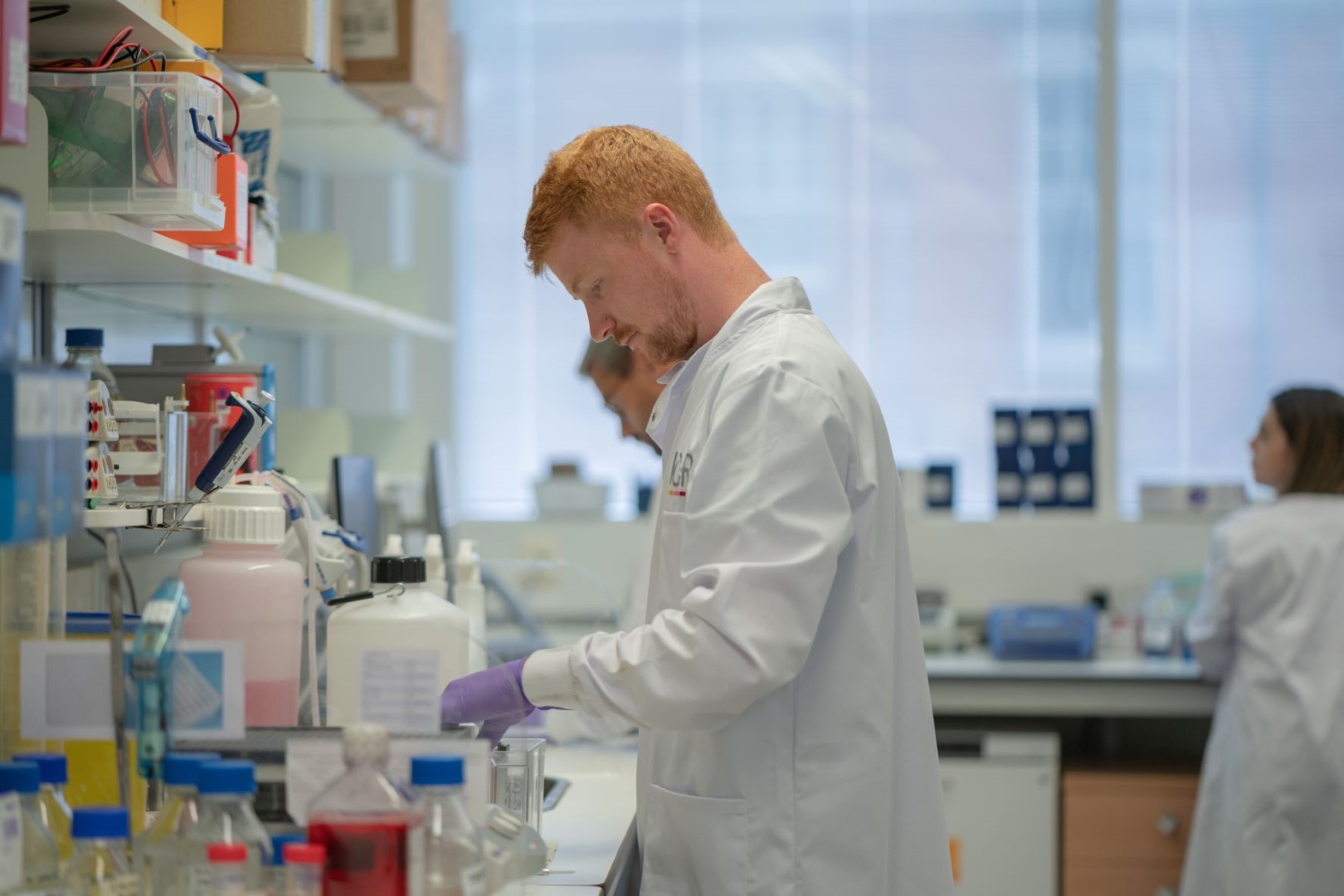Researchers have discovered weaknesses in some triple negative breast cancers that could lead to new ways to treat this form of the disease.
Researchers, funded by Breast Cancer Now, have uncovered new weaknesses in triple negative breast cancer with high levels of a protein called HORMAD1.
They have found a group of proteins that these breast cancers depend on to survive. When those proteins were switched off in lab experiments, 50% of cancer cells with high HORMAD1 levels died.
The hope is that they can now use this knowledge to develop new much needed targeted treatments for triple negative breast cancer with high levels of HORMAD1.

Understanding HORMAD1
Around 15% of breast cancers are classed as triple negative. This form of breast cancer can be more aggressive than other forms of the disease. But, there are currently limited targeted treatments available for triple negative breast cancer.
Previous research showed that 60% of triple negative breast cancers have high levels of a protein called HORMAD1, which is normally only present in the testes.
HORMAD1 is usually involved in breaking and repairing DNA, but high levels of HORMAD1 like we see in triple negative cancer cells can cause the DNA repair system to be disturbed.
Professor Andrew Tutt from our Research Unit at Kings College and the Breast Cancer Now Toby Robins Research Centre at the Institute of Cancer Research, London, wanted to see if he could use that weakness.
Using cancer cells' weaknesses
To do this, Andrew and his team created special cancer cells to mimic triple negative breast cancers that have high levels of HORMAD1.
They found that cancer cells with a high amount of HORMAD1 depended on a group of proteins called TLS polymerases to survive.
The researchers discovered that in cells with high levels of HORMAD1, switching off these TLS polymerases caused around 50% of the cells to die. Switching off proteins is a way in which scientists mimic how drugs may block the function of proteins.
These results expose a new weakness in cancer cells with high levels of HORMAD1, which could provide a new treatment target for some triple negative breast cancers.
A new target for some triple negative breast cancers
Although finding potential new targets to treat some triple negative breast cancers is exciting, the science is at an early stage. More work is needed to develop and test drugs that target TLS polymerases.
The research also suggests the presence of HORMAD1 in triple negative breast cancer cells could act as an indicator that a patient might benefit from other targeted treatments - such as PARP inhibitors.
Dr Kotryna Temcinaite, Senior Research Communications Manager at Breast Cancer Now, said: “This is the first time the weaknesses in some triple negative breast cancers, which make the protein HORMAD1, have been revealed and promisingly they could lead to new ways to treat the disease.
“Each year, around 8,000 UK women are diagnosed with triple negative breast cancer and it’s more likely than most other breast cancers to return or spread during the first years following successful treatment. There are also fewer targeted treatments available so it’s vital we find new and effective ways to tackle this devastating disease, which is why research like this is so important.
“This early investigation into the benefits of targeting cancer weaknesses caused by HORMAD1 may also hold the key to help treat other types of cancers which is hugely exciting.”
The study was published in the journal Oncogene and funded by Breast Cancer Now.
These discoveries are important steps towards the best possible treatments and support for people affected by the disease.
Whatever you’re going through. Whoever you are. We’re here.